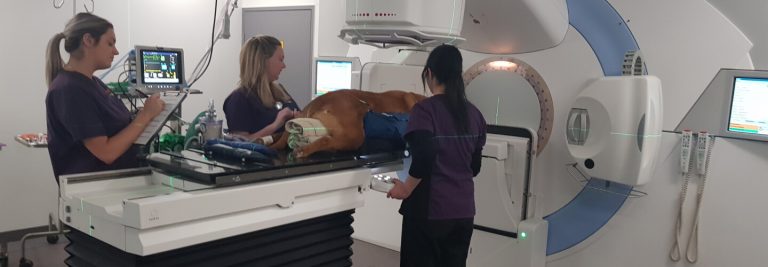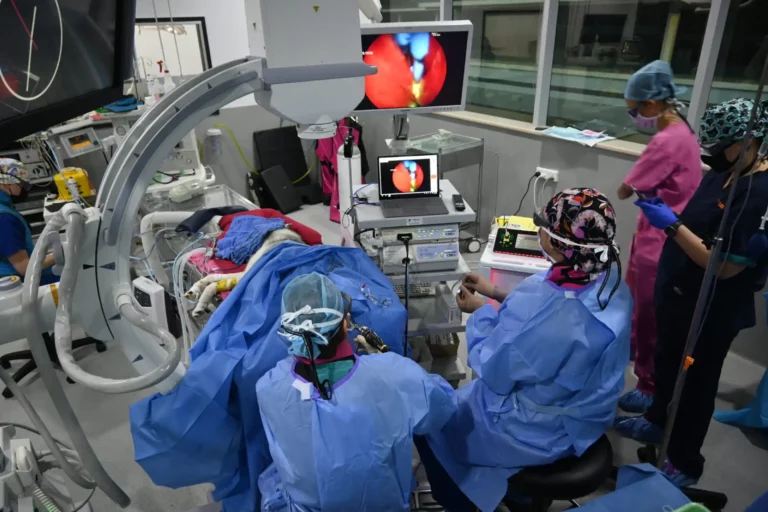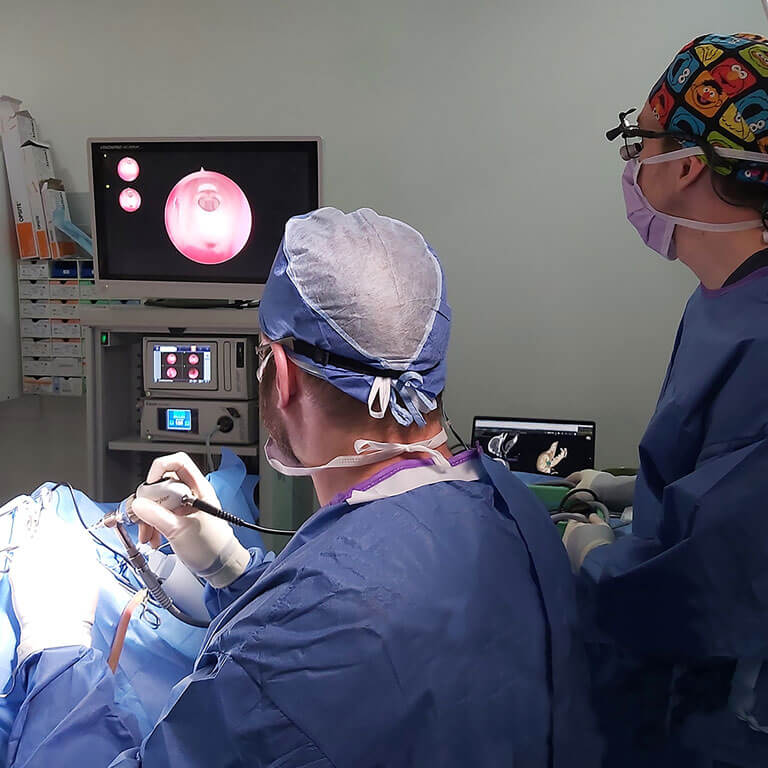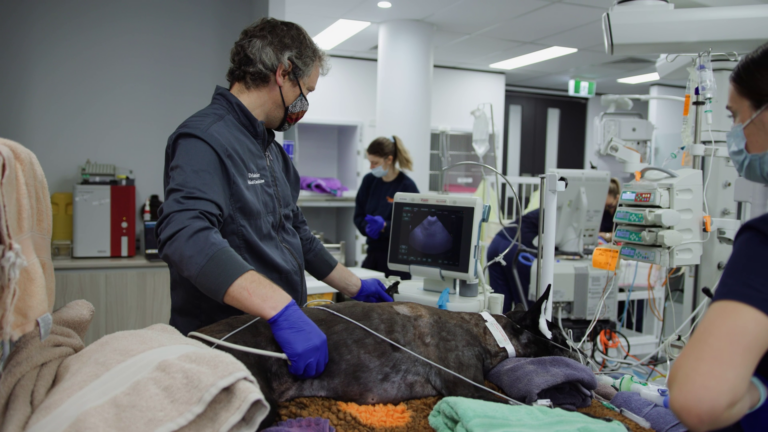What is urinary incontinence?
Urinary incontinence refers to the condition where your pet leaks urine and are generally unaware that it has happened. It mostly occurs in female dogs and cats. Urinary incontinence can be intermittent (often when a pet has been asleep or lying down) or continuous where urine leaks slowly all of the time and the area around the vulva is usually moist. Often dogs will lick around this area to keep themselves clean.
Some conditions can “mimic” urinary incontinence. For example, dogs with a urinary tract infection may have an irritable/inflamed bladder which will suddenly contract uncontrollably resulting in inappropriate urination that can be mistaken for incontinence.
Common causes of urinary incontinence
True urinary incontinence is usually caused by one of the following:
Ectopic ureter
The ureter is the tubing that connects the kidney to the urinary bladder. Some dogs may be born with an abnormal position of the openings of one or both of their ureters resulting in urine bypassing the bladder, and leaking constantly into the urethra (the tubing that connects the bladder to the outside world).
Urethral sphincter mechanism incompetence (USMI)
USMI is one of the most common causes of urinary incontinence. It is very similar to stress incontinence in women. The reported incidence of USMI in female dogs across all ages is between 4.9% and 20%. It is due to a weakness of the “sphincter” of the urinary bladder. It is rarely seen in cats. In dogs, it can be associated with desexing (with speyed female dogs 8 times more likely to be incontinent). USMI is thought to be related to changes in their hormone status (particularly oestrogen), and a shorter urethral length and intra-pelvic bladder (where most of the bladder sits within the pelvic canal).
Less common causes of incontinence include
Neurologic abnormalities
The urethral sphincter mechanism as well as the muscles in the bladder wall are connected to nerves coming from the spinal cord. Any spinal cord problems, congenital or acquired, may therefore lead to urinary incontinence.
Prostatic surgery
As with humans, surgery of the prostate can in rare cases lead to urinary incontinence. However, it is more common for prostatic problems to cause urinary obstruction and straining to urinate.
Other anatomical abnormalities of the genitourinary tract
Vaginovestibular stenosis (narrowing) was previously thought to cause pooling of urine within the vagina, thus leading to incontinence. We now know that of itself it does not cause urinary incontinence.
Treating urinary incontinence
As urinary tract infections can mimic incontinence, the first step is to usually check collect a urine sample to check for infection. If there is a bladder infection we will treat this first to determine if the signs of incontinence resolve. If after the bladder infection has been successfully treated and the incontinence does not resolve, then other treatment options will need to be explored.
SASH North Ryde, through the Bladder & Kidney Centre, offers a non-surgical and minimally invasive procedure for ectopic ureters which can definitively diagnose and treat the condition simultaneously under a single general anaesthetic. Known as cystoscopy and laser ablation, a tiny camera is placed into the urethra (the body’s external opening) to visualise the malformation of the ureter. A laser is then used to create a correct opening from the ureter into the bladder in a normal anatomic position. Where laser ablation is inappropriate or not available, ectopic ureters can be corrected through open surgery, followin the same corrective principles. In most instances, these procedures alone can be successful. However, in some cases, the patient can remain incontinent. In most instances this is a result of concurrent USMI. This can be treated with ongoing medication and further surgery (see below) to fully resolve the incontinence.
We always attempt to treat USMI with medications in the first instance. In most cases this treatment is successful. In those cases that do not respond to medication or if the medication becomes ineffective, then surgery may be required. Several different surgical techniques may be used to treat this condition. These include colposuspension, collagen injections, and placement of a muscle or tape sling around the urethral sphincter. The response to these surgeries has been variable, and many patients still require medications after surgery.
Currently our surgical treatment of choice for USMI is implantation of an artificial urethral device. This device is an inflatable (with fluid) silicone cuff that is placed loosely around the urethra surgery. The cuff is then attached via a tube to a reservoir that sits under the skin. Once the patient has recovered from the surgery, tiny amounts of liquid are injected into the reservoir to inflate the cuff every week, until urinary continence is achieved.
Risks of urinary incontinence surgery and laser ablation
The risk of complication for laser ablation of ectopic ureter is minimal and fewer compared to open surgery. As with all surgeries, complications are possible but rare and may be as simple as a skin wound infection to as complex as requiring another surgery.
Ectopic ureter surgery can rarely be associated with scarring and subsequent blockage of the operated ureter, necessitating a repeat surgery to create another opening between the ureter and bladder.
Complications associated with placement of an artificial urethral device include continued incontinence (usually due to device failure caused by leakage of the fluid from the device), and urethral obstruction due to excessive scarring at the site of the implantation of the cuff around the urethra. If this occurs the cuff will need to be removed and the scar tissue dissected away.
All-in-all the treatment options for incontinence have a very high success rate and can be “life transforming” for you and your pet.
If you have a pet with urinary incontinence we recommend a consultation with one of the specialists within the SASH Bladder & Kidney Centre, or a member of the Internal Medicine team.




